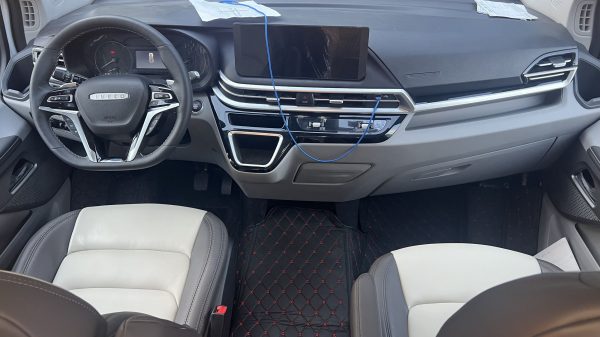Introduction
Truck mounted cranes are versatile and powerful machines that play a crucial role in various industries such as construction, transportation, and logistics. These cranes are mounted on trucks, allowing them to be easily transported to different job sites and quickly set up for lifting and moving heavy loads. Understanding the specifications of truck mounted cranes is essential for selecting the right equipment for specific tasks. In this comprehensive guide, we will delve into the key specifications of truck mounted cranes, including capacity, boom length, reach, mobility, and safety features.
Capacity
One of the most important specifications to consider when choosing a truck mounted crane is its lifting capacity. The lifting capacity of a crane is typically expressed in terms of maximum weight that it can lift at a specific radius. For example, a crane may have a maximum lifting capacity of 10 tons at a radius of 3 meters. It is essential to match the crane's capacity with the weight of the loads that will be lifted to ensure safe and efficient operations.
Different truck mounted cranes come with varying lifting capacities ranging from a few tons to over 100 tons. The choice of crane capacity will depend on the specific requirements of the job and the types of loads that need to be lifted. It is crucial to consider the weight of the heaviest loads that will be handled to ensure that the crane can safely lift and move them.
Boom Length
The boom length of a truck mounted crane refers to the horizontal distance from the center of the crane's rotation to the tip of the boom. The boom length plays a critical role in determining the reach and height of the crane. Longer boom lengths allow the crane to reach higher and extend farther, making them suitable for lifting loads at greater heights or distances.
Truck mounted cranes come with various boom length options, ranging from a few meters to over 50 meters. The choice of boom length will depend on the specific requirements of the job, such as the height and reach needed to lift and move loads in different settings. It is essential to select a crane with an appropriate boom length to ensure that it can effectively reach and lift loads at the desired locations.
Reach
Reach is another important specification to consider when evaluating truck mounted cranes. Reach refers to the maximum horizontal distance that the crane can extend the load away from the center of rotation. The reach of a crane is determined by factors such as boom length, boom angle, and counterweight configuration.
Truck mounted cranes with longer reaches are ideal for lifting and moving loads over obstacles or reaching into confined spaces. The reach of a crane should be carefully assessed to ensure that it can access and lift loads at various locations on the job site. Consider the specific requirements of the job, such as the distance between the crane and the load, to determine the appropriate reach needed for the crane.
Mobility
Mobility is a crucial specification for truck mounted cranes, as it determines the crane's ability to move and operate in different environments. Truck mounted cranes are designed to be mobile and can be driven to various job sites, making them versatile and efficient machines for lifting and moving heavy loads.
When considering the mobility of a truck mounted crane, factors such as drive system, steering capabilities, and outrigger setup should be taken into account. The drive system of the crane determines its speed, maneuverability, and off-road capabilities. Cranes with all-wheel drive or hydraulic systems offer better mobility in challenging terrain and can access remote job sites more easily.
Steering look what i found play a crucial role in the crane's ability to navigate tight spaces and maneuver around obstacles. Cranes with features such as crab steering or independent rear-wheel steering offer enhanced maneuverability and control in confined areas. Outriggers are essential for stabilizing the crane during lifting operations and should be deployed to provide a safe and stable working platform.
Safety Features
Safety is paramount when operating truck mounted cranes, and it is essential to consider the safety features of the crane when selecting equipment for a job. Truck mounted cranes come with various safety features designed to protect operators, workers, and the surrounding environment during lifting operations.

Some common safety features found in truck mounted cranes include overload protection systems, emergency stop buttons, load moment indicators, and anti-two block systems. Overload protection systems monitor the crane's load weight and prevent the crane from lifting loads that exceed its capacity, reducing the risk of accidents and equipment damage.
Emergency stop buttons allow operators to quickly halt crane operations in case of an emergency or unsafe condition, ensuring the safety of personnel and equipment. Load moment indicators provide real-time information on the crane's load capacity and operating conditions, allowing operators to make informed decisions during lifting operations.
Anti-two block systems prevent the crane from operating in a two-blocking condition, where the hook block contacts the boom tip, causing damage to the crane and posing a safety hazard. These safety features are essential for protecting personnel, equipment, and the job site during crane operations and should be carefully evaluated when selecting a truck mounted crane.
Conclusion
Truck mounted cranes are powerful and versatile machines that are essential for lifting and moving heavy loads in various industries. Understanding the specifications of truck mounted cranes, including capacity, boom length, reach, mobility, and safety features, is crucial for selecting the right equipment for specific job requirements. By considering these key specifications and evaluating the safety features of the crane, operators can ensure safe and efficient crane operations on the job site.
